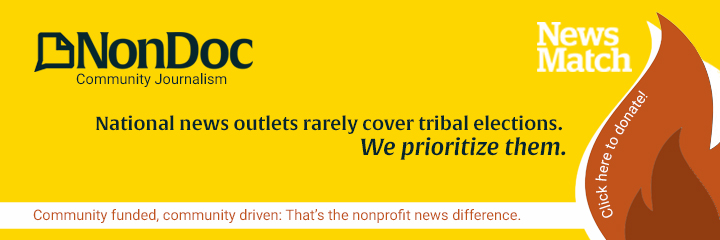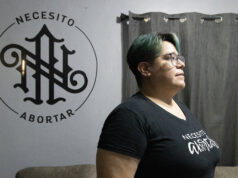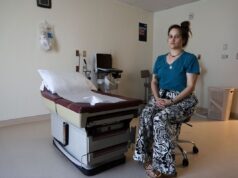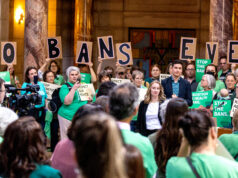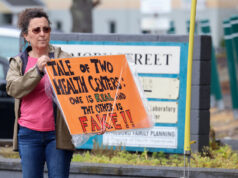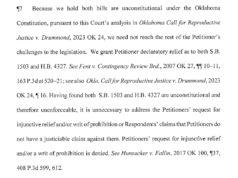In 1989 (another summer), Public Enemy was rapping about fighting the discriminatory powers that be on the soundtrack to Spike Lee’s seminal Do The Right Thing. Meanwhile, the state of Missouri was busy upholding a law that imposed restrictions on access to funds, facilities and education for family-planning services and counseling.
Nearly three decades later, we’re still not doing the right thing. In the almost 30 years since Chuck D’s (admittedly unrelated) battle cry, abortion is still continually stigmatized as only a “women’s issue” while our government has adopted increasingly capricious laws and attitudes toward health and reproductive rights in the United States.
Though efforts and lobbying groups on both sides of the fence have attempted to challenge the nature of the conversation, we’re all a little overdue for some awareness. The more I researched and read while writing this piece, the more appalled I grew at how little I’ve comprehended about the laws and decisions made for me, my friends and my loved ones by state officials entrusted to public office.
Despite numbers, laws remain misaligned
The Guttmacher Institute, America’s primary source of policy analysis on abortion, estimates that roughly 30 percent of American women will have an abortion by the time they’re 45. THIRTY PERCENT. By current population numbers, that’s 95.6 million daughters, sisters, cousins, friends, wives or girlfriends that, at the very least, deserve an educated say in their own reproductive decisions and their access to options. That makes abortion one of the nation’s most common medical procedures.
Surely something so widespread wouldn’t be the most regulated, the most denied or inaccessible for those that need it, right?
Wrong.
Given these prolific numbers, laws protecting or mandating abortion procedures still remain outrageously misaligned. In the 38 years since Roe v. Wade divisively reshaped national politics into pro-life or pro-choice camps, increased state and federal legislation is eroding the Roe verdict with little urgency paid to educating the general public about them. Over the past five years, more than one quarter of state-specific abortion restrictions have been enacted since the landmark Supreme Court decision in 1973, from an attempted law to block women’s rights to second-trimester abortions in Kansas to Oklahoma’s efforts to criminalize the procedure and prosecute any doctor that performs one — without any exceptions for sexual assault or health emergencies.
One of the biggest linchpins has been the state of Texas, where, back in 2013, Rep. Wendy Davis (D) held an 11-hour long filibuster in an attempt to block the state’s proposed bill to limit the abilities of reproductive-health providers. The bill eventually passed, prompting what is likely to be one of the nation’s biggest abortion cases since Roe v. Wade was tried in the Supreme Court.
This March, the Court began hearing Whole Women’s Health v. Hellerstedt, in which they have to decide whether to uphold the HB2 law in Texas, which, if fully implemented, would shut down the majority of the state’s abortion clinics, leaving its more than 27 million citizens with just 10 reproductive-health facilities and severely restricting access to those that remain. The bill generates substantial obstacles for women to seek care in a healthy and safe way.
Texas is defending its law as a necessity in protecting women’s health, but a slew of current research and just plain common sense would prove otherwise.
Unintended consequences of abortion restrictions
Since 2011, Google searches for “self-induced abortions” exceeded the national average by more than 10 percent in those states that have stricter abortion laws, primarily in the Midwest and Bible Belt regions. In fact, an analysis of Google searches conducted by the New York Times earlier this year highlighted Mississippi, home to just one crowded abortion clinic, as the state with the highest number of searches for DIY abortions as well as dangerous black-market abortion pills.
RELATED
DIY abortion searches: ‘Can I douche with bleach?’ by William W. Savage III
Not only do tighter restrictions have a disastrous impact on women, men, children, families and justice itself, but they also hurt family planning and abortion care providers. The American Journal of Public Health reports that ramifications are also felt through access to contraceptive counseling and sex education as well as the ability of clinics to provide adequate care and advice in the face of closures, limitations or cuts to funding.
Women deserve right to choose
Aside from legislation, an emotive issue is at the heart of the abortion debate: All women deserve a dignified and responsible choice as to when, or if, they choose to have children. This isn’t a decision to be made by others. Because when we make it permissible for people to exclude us from a seat at the table, we send a message that we don’t deserve one, that we aren’t valued enough to expect accessible health care solutions, let alone make our own decisions regarding our rights.
Yet despite the blockades, small but powerful voices are growing amid the static. For every Gov. Rick Perry, there is a Wendy Davis. For every Rep. Dan Flynn (R), there is a Samantha Bee. And there is hope that the Whole Women’s Health decision expected for this summer will be swayed by the three women on the Supreme Court who weren’t on the bench for previous landmark abortion cases: Justices Ruth Bader Ginsburg, Elena Kagan and Sonia Sotomayor.
We still have a long way to go in fighting the powers that be, but the power to do so remains within our ability to understand and speak up for what we are entitled to, so that we are bolstered by an awareness and self-assuredness of the rights that we so appropriately deserve.

